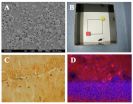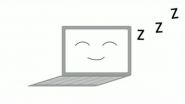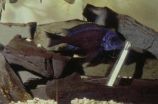Physical exercise in old age can improve brain perfusion as well as certain memory skills. This is the finding of Magdeburg neuroscientists who studied men and women aged between 60 and 77. In younger individuals regular training on a treadmill tended to improve cerebral blood flow and visual memory. However, trial participants who were older than 70 years of age tended to show no benefit of exercise. Thus, the study also indicates that the benefits of exercise may be limited by advancing age. Researchers of the German Center for Neurodegenerative Diseases (DZNE), the University of Magdeburg and the Leibniz Institute for Neurobiology have published these results in the current edition of the journal Molecular Psychiatry. Scientists at the Karolinska Institute in Stockholm and the Max Planck Institute for Human Development were also involved in the study.
The 40 test volunteers were healthy for their age, sedentary when the study commenced and divided into two groups. About half of the study participants exercised regularly on a treadmill for 3 months. The other individuals merely performed muscle relaxation sessions. In 7 out of 9 members of the exercise group who were not more than 70 years old, the training improved physical fitness and also tended to increase perfusion in the hippocampus – an area of the brain which is important for memory function. The increased perfusion was accompanied by improved visual memory: at the end of the study, these individuals found it easier to memorize abstract images than at the beginning of the training program. These effects were largely absent in older volunteers who participated in the workout as well as in the members of the control group.
The study included extensive tests of the volunteers' physical condition and memory. Furthermore, the study participants were examined by magnetic resonance imaging (MRI). This technique enables detailed insights into the interior of the brain.
Exercising against dementia
Physical exercise is known to have considerable health benefits: the effects on the body have been researched extensively, the effects on brain function less so. An increase in brain perfusion through physical exercise had previously only been demonstrated empirically in younger people. The new study shows that some ageing brains also retain this ability to adapt, even though it seems to decrease with advancing age. Furthermore, the results indicate that changes in memory performance resulting from physical exercise are closely linked to changes in brain perfusion.
"Ultimately, we aim to develop measures to purposefully counteract dementia such as Alzheimer's disease. This is why we want to understand the effects of physical exercise on the brain and the related neurobiological mechanisms. This is essential for developing treatments that are truly effective," is how Professor Emrah Düzel, site speaker of the DZNE in Magdeburg and director of the Institute of Cognitive Neurology and Dementia Research at the University of Magdeburg, explains the background to the study.
The goal: new brain cells
The researchers' goal is to cause new nerve cells to grow in the brain. This is how they intend to counter the loss of neurons typical of dementia. "The human brain is able to change and evolve throughout our lives. New nerve cells can form even in adult brains," says Düzel. "Our aim is to stimulate this so-called neurogenesis. We don't yet know whether our training methods promote the development of new brain cells. However, fundamental research shows that the formation of new brain cells often goes hand in hand with improved brain perfusion."
Changes in the hippocampus
Indeed, it did turn out that the treadmill exercise sessions caused more blood to reach the hippocampus in younger participants. "This improves the supply of oxygen and nutrients and may also have other positive effects on the brain's metabolism," says the neuroscientist. "However, we have also seen that the effect of the training decreases with age. It is less effective in people aged over 70 than in people in their early 60s. It will be an important goal of our research to understand the causes for this and to find remedies."
Düzel adds: "It is encouraging to see that visual memory improved as brain perfusion increased. However, effective treatments would also have to affect other brain functions. In our study, the effect was limited to visual short-term memory."
A combined training for body and mind
Other experiments are now under way in Magdeburg in which test participants are sent on an unusual kind of scavenger hunt: they are assigned the task of finding objects concealed in a computer-generated landscape which is pictured on a large screen. Movement control in this virtual world is done with the help of a treadmill. "This complex situation makes high demands on motor skills and sense of orientation," explains Düzel. "It challenges both the brain as well as the muscles."
In the long term, the scientists aim to include people in the early stages of Alzheimer's disease in their study program. "We are looking for ways of delaying or even stopping the progression of the disease. And we are also researching methods of prevention," emphasizes Düzel. "Connecting physical activity and mental exercise may have a broad impact, and combined training might become a therapeutic approach. However, this has yet to be shown. In fact, our current results suggest that we may need pharmacological treatments to make exercise more effective."
INFORMATION:
Original Publication
"Vascular hippocampal plasticity after aerobic exercise in older adults", Anne Maass, Sandra Düzel, Monique Goerke, Andreas Becke, Uwe Sobieray, Katja Neumann, Martin Lövden, Ulman Lindenberger, Lars Bäckman, Rüdiger Braun-Dullaeus, Dörte Ahrens, Hans-Jochen Heinze, Notger G. Müller, Emrah Düzel, Molecular Psychiatry, 2014, doi:10.1038/mp.2014.114 (URL: http://www.nature.com/mp/journal/vaop/ncurrent/abs/mp2014114a.html)
The German Center for Neurodegenerative Diseases (DZNE) investigates the causes of diseases of the nervous system and develops strategies for prevention, treatment and care. It is an institution of the Helmholtz Association of German Research Centres with sites in Berlin, Bonn, Dresden, Göttingen, Magdeburg, Munich, Rostock/Greifswald, Tübingen and Witten. The DZNE cooperates closely with universities, their clinics and other research facilities.





